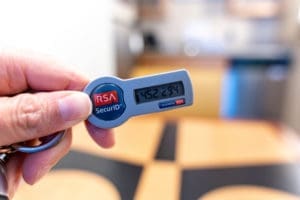 October 1 kicks off Cybersecurity Awareness Month, now in its 18th year. A joint initiative of the Cybersecurity and Infrastructure Security Agency (CISA) and the National Cyber Security Alliance (NCSA), the awareness month seeks to educate individuals and organizations about their own responsibility for cybersecurity. After all, simple steps like keeping up with security updates and using unique and complex passwords go a long a way to keeping one cybersafe. But the cybersecurity industry’s beginnings go back much further, to the development of the RSA encryption algorithm.
October 1 kicks off Cybersecurity Awareness Month, now in its 18th year. A joint initiative of the Cybersecurity and Infrastructure Security Agency (CISA) and the National Cyber Security Alliance (NCSA), the awareness month seeks to educate individuals and organizations about their own responsibility for cybersecurity. After all, simple steps like keeping up with security updates and using unique and complex passwords go a long a way to keeping one cybersafe. But the cybersecurity industry’s beginnings go back much further, to the development of the RSA encryption algorithm.
Interest in cybersecurity began growing in the 1970s. Although the concept of a self-replicating program was nothing new—John von Neumann was lecturing about it at the University of Illinois in 1949—the first computer worm was developed by Bob Thomas in 1971 for the ARPANET. Thomas’ Creeper, which did no harm, was quickly followed by Thomas’ Reaper, which was essentially the first antivirus software as it sought to remove Creeper.
RSA encryption algorithm changes cybersecurity forever
But it wasn’t until September 20, 1983, that the cybersecurity industry truly began. That’s when Massachusetts Institute of Technology computer scientists Ronald Rivest and Adi Shamir, along with their friend, number theorist Leonard Adleman, were issued a patent for the RSA encryption algorithm (with “RSA” drawn from the first letter of their last names).
Initially developed in 1977, the RSA algorithm relies on the factoring of two large prime numbers and the use of a public key and a private key to protect data. The idea is that the product of the two prime numbers will be too large for computers to quickly factor. The RSA patent was released to the public in 2000, two weeks before its expiration.
Bonus bit of cybersecurity trivia for you: Many credit Adleman of the RSA algorithm with the first use of the term “virus” to describe the behavior of malware.
Photo: melissamn / Shutterstock
